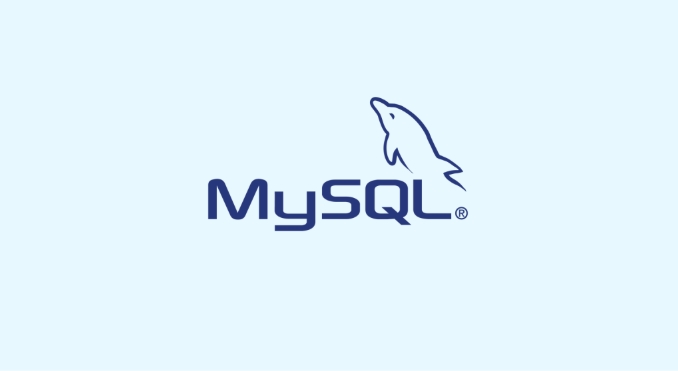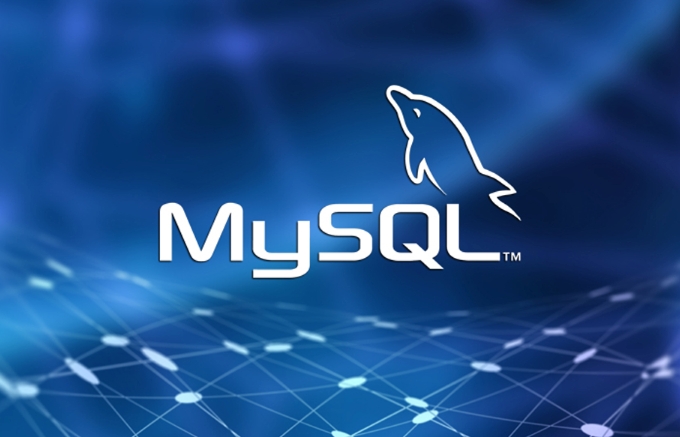How to add the MySQL bin directory to the system PATH
To add the MySQL bin directory to the system PATH, it needs to be configured according to the different operating systems. 1. Windows system: Find the bin folder in the MySQL installation directory (the default path is usually C:\Program Files\MySQL\MySQL Server XX\bin), right-click "This Computer" → "Properties" → "Advanced System Settings" → "Environment Variables", select Path in "System Variables" and edit it, add the MySQL bin path, restart the command prompt after saving and enter mysql --version verification; 2. macOS and Linux systems: Bash user edits ~/.bashrc or ~/.bash_profile, Zsh user edits ~/.zshrc, add export PATH="/usr/local/mysql/bin:$PATH", and execute source after saving The command makes the configuration take effect and uses echo $PATH to check whether the MySQL path has been included; common problems include path errors, unrefreshed shells, confusion between user variables and system variables, multi-version conflicts, etc., and you need to check one by one to ensure that the configuration is correct and effective.

After MySQL is installed, many command-line operations need to enter the bin directory to run MySQL tools, such as mysql , mysqldump , etc. In order to avoid manually switching paths every time, adding MySQL's bin directory to the system PATH is a very practical operation. The following explains how to set it up according to different operating systems.

How to add MySQL bin to PATH on Windows system
On Windows, setting PATH through environment variables is most common. Find the bin folder in the MySQL installation directory (the default path is usually C:\Program Files\MySQL\MySQL Server XX\bin ), and follow the following steps:

- Right-click "This Computer" or "My Computer" and select "Properties"
- Click "Advanced System Settings" on the left
- Click "Environment Variable" in the pop-up window
- In the System Variables area, find and select
Path, click Edit - Click "New" and enter the
binpath of MySQL - Continuously point "OK" to save all settings
After completion, open a new command prompt window and enter mysql --version to test whether it takes effect. If the version information is displayed, the configuration is successful.
How to add PATH on macOS and Linux systems
macOS and Linux usually use Bash or Zsh as the default shell, and the configuration method is similar, mainly modifying the configuration file of the corresponding shell.

Bash User:
Edit the ~/.bashrc or ~/.bash_profile file and add the following content:
export PATH="/usr/local/mysql/bin:$PATH"
Zsh User:
Edit the ~/.zshrc file, and add the above line of code.
After saving, execute source ~/.bashrc or source ~/.zshrc to make the configuration take effect immediately. You can use echo $PATH to see if the current PATH contains the MySQL path.
Note: The MySQL installation locations may be different in different systems. You can use
which mysqlor find the installation directory to confirm the actual path.
Frequently Asked Questions and Notes
Sometimes, PATH is clearly set, but the command is still unrecognized. This may be caused by the following reasons:
- The path is written incorrectly : for example, there are too many spaces, misspellings, or using backslashes
\instead of forwardslashes/ - The shell has not been refreshed : remember to run the
sourcecommand after modifying the configuration file, otherwise the new terminal will take effect - User variable vs System variable : Is the current user's PATH or system level set under Windows? Make sure you added it in the correct variable
- Multi-version conflict : If multiple MySQL or MariaDB are installed in the system, there may be command conflicts. You can use
which mysqlto check which path the executable file is called.
Basically that's it. The whole process is not complicated, but some details are easy to ignore, especially the issues of paths and shell types. As long as you check it step by step, it can usually be done.
The above is the detailed content of How to add the MySQL bin directory to the system PATH. For more information, please follow other related articles on the PHP Chinese website!

Hot AI Tools

Undress AI Tool
Undress images for free

Undresser.AI Undress
AI-powered app for creating realistic nude photos

AI Clothes Remover
Online AI tool for removing clothes from photos.

Clothoff.io
AI clothes remover

Video Face Swap
Swap faces in any video effortlessly with our completely free AI face swap tool!

Hot Article

Hot Tools

Notepad++7.3.1
Easy-to-use and free code editor

SublimeText3 Chinese version
Chinese version, very easy to use

Zend Studio 13.0.1
Powerful PHP integrated development environment

Dreamweaver CS6
Visual web development tools

SublimeText3 Mac version
God-level code editing software (SublimeText3)
 How to add a primary key to an existing table in MySQL?
Aug 12, 2025 am 04:11 AM
How to add a primary key to an existing table in MySQL?
Aug 12, 2025 am 04:11 AM
To add a primary key to an existing table, use the ALTERTABLE statement with the ADDPRIMARYKEY clause. 1. Ensure that the target column has no NULL value, no duplication and is defined as NOTNULL; 2. The single-column primary key syntax is ALTERTABLE table name ADDPRIMARYKEY (column name); 3. The multi-column combination primary key syntax is ALTERTABLE table name ADDPRIMARYKEY (column 1, column 2); 4. If the column allows NULL, you must first execute MODIFY to set NOTNULL; 5. Each table can only have one primary key, and the old primary key must be deleted before adding; 6. If you need to increase it yourself, you can use MODIFY to set AUTO_INCREMENT. Ensure data before operation
 Explain database indexing strategies (e.g., B-Tree, Full-text) for a MySQL-backed PHP application.
Aug 13, 2025 pm 02:57 PM
Explain database indexing strategies (e.g., B-Tree, Full-text) for a MySQL-backed PHP application.
Aug 13, 2025 pm 02:57 PM
B-TreeindexesarebestformostPHPapplications,astheysupportequalityandrangequeries,sorting,andareidealforcolumnsusedinWHERE,JOIN,orORDERBYclauses;2.Full-Textindexesshouldbeusedfornaturallanguageorbooleansearchesontextfieldslikearticlesorproductdescripti
 How to back up a database in MySQL
Aug 11, 2025 am 10:40 AM
How to back up a database in MySQL
Aug 11, 2025 am 10:40 AM
Using mysqldump is the most common and effective way to back up MySQL databases. It can generate SQL scripts containing table structure and data. 1. The basic syntax is: mysqldump-u[user name]-p[database name]>backup_file.sql. After execution, enter the password to generate a backup file. 2. Back up multiple databases with --databases option: mysqldump-uroot-p--databasesdb1db2>multiple_dbs_backup.sql. 3. Back up all databases with --all-databases: mysqldump-uroot-p
 How to change the GROUP_CONCAT separator in MySQL
Aug 22, 2025 am 10:58 AM
How to change the GROUP_CONCAT separator in MySQL
Aug 22, 2025 am 10:58 AM
You can customize the separator by using the SEPARATOR keyword in the GROUP_CONCAT() function; 1. Use SEPARATOR to specify a custom separator, such as SEPARATOR'; 'The separator can be changed to a semicolon and plus space; 2. Common examples include using the pipe character '|', space'', line break character '\n' or custom string '->' as the separator; 3. Note that the separator must be a string literal or expression, and the result length is limited by the group_concat_max_len variable, which can be adjusted by SETSESSIONgroup_concat_max_len=10000; 4. SEPARATOR is optional
 What is the difference between UNION and UNION ALL in MySQL?
Aug 14, 2025 pm 05:25 PM
What is the difference between UNION and UNION ALL in MySQL?
Aug 14, 2025 pm 05:25 PM
UNIONremovesduplicateswhileUNIONALLkeepsallrowsincludingduplicates;1.UNIONperformsdeduplicationbysortingandcomparingrows,returningonlyuniqueresults,whichmakesitsloweronlargedatasets;2.UNIONALLincludeseveryrowfromeachquerywithoutcheckingforduplicates,
 How to lock tables in MySQL
Aug 15, 2025 am 04:04 AM
How to lock tables in MySQL
Aug 15, 2025 am 04:04 AM
The table can be locked manually using LOCKTABLES. The READ lock allows multiple sessions to read but cannot be written. The WRITE lock provides exclusive read and write permissions for the current session and other sessions cannot read and write. 2. The lock is only for the current connection. Execution of STARTTRANSACTION and other commands will implicitly release the lock. After locking, it can only access the locked table; 3. Only use it in specific scenarios such as MyISAM table maintenance and data backup. InnoDB should give priority to using transaction and row-level locks such as SELECT...FORUPDATE to avoid performance problems; 4. After the operation is completed, UNLOCKTABLES must be explicitly released, otherwise resource blockage may occur.
 How to select data from a table in MySQL?
Aug 19, 2025 pm 01:47 PM
How to select data from a table in MySQL?
Aug 19, 2025 pm 01:47 PM
To select data from MySQL table, you should use SELECT statement, 1. Use SELECTcolumn1, column2FROMtable_name to obtain the specified column, or use SELECT* to obtain all columns; 2. Use WHERE clause to filter rows, such as SELECTname, ageFROMusersWHEREage>25; 3. Use ORDERBY to sort the results, such as ORDERBYageDESC, representing descending order of age; 4. Use LIMIT to limit the number of rows, such as LIMIT5 to return the first 5 rows, or use LIMIT10OFFSET20 to implement paging; 5. Use AND, OR and parentheses to combine
 How to use the IN operator in MySQL?
Aug 12, 2025 pm 03:46 PM
How to use the IN operator in MySQL?
Aug 12, 2025 pm 03:46 PM
TheINoperatorinMySQLchecksifavaluematchesanyinaspecifiedlist,simplifyingmultipleORconditions;itworkswithliterals,strings,dates,andsubqueries,improvesqueryreadability,performswellonindexedcolumns,supportsNOTIN(withcautionforNULLs),andcanbecombinedwith







